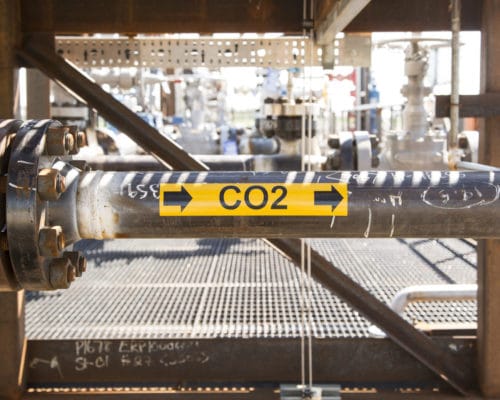Japan’s Hydrogen Plans: A Closer Look
12 March 2023 – by Tim Daiss Comments (0)
At the G7 Summit held last June in Germany’s Bavarian Alps, Japan joined the rest of the G7, committing to ending new and direct public finance for international, unabated fossil fuel projects by the end of this year.
However, statements and actions such as Japan’s hydrogen plans following this commitment show that Japan is interpreting its commitment very loosely. The country intends to continue supporting upstream and fossil fuels infrastructure projects that it deems as abated projects.
This includes using false solution technologies that promise a lot but deliver very little on CO2 emissions reduction. These include additional liquefied natural gas (LNG) upstream projects. They also include hydrogen production and hydrogen supply chain development with other countries.
Japan has already invested some JPY 2 trillion (USD 16 billion) in a Green Innovation Fund and introduced policies to encourage innovation in hydrogen and other technologies for private businesses, with the potential of decarbonising society.
In December, Japan ramped up its hydrogen development even more. The country signed two cooperation agreements with legacy oil producer Saudi Arabia. The deal covers the fields of carbon recycling, hydrogen and ammonia. Saudi Arabia is one of Japan’s largest crude oil suppliers. It accounted for 36.3% of its oil import needs in November 2022.
Japan’s Hydrogen Strategy and Development Problems
The deal falls under Japan’s National Hydrogen Strategy outlined in 2017, which aims to make the country a hydrogen-based society and a global leader in hydrogen usage and hydrogen market.
The strategy offers a step-by-step plan under a three-phase program. It includes the dramatic expansion of hydrogen use, the full-fledged introduction of hydrogen power generation, the establishment of a large-scale supply system (by the second half of this decade) and the establishment of a CO2-free hydrogen supply system on a total basis (by around 2040). It is the start of a hydrogen society.
Japan hopes to produce 3 million tonnes of hydrogen annually by 2030 and 20 million tonnes a year by 2050.
However, much of Japan’s hydrogen development focus on blue hydrogen production, which will be detrimental to its 2050 carbon-neutral goals.
Five Types of Hydrogen
There are five main types of hydrogen. They range from green hydrogen, which involves no carbon emissions since production involves renewable energy, usually solar and wind. It is made by splitting water via electrolysis.
Next is blue hydrogen, produced by using natural gas while capturing emissions using carbon capture storage utilisation (CCSU) technology. However, CCSU technology is not without its drawbacks, including still unproven technology and being energy intensive.
These are followed by pink hydrogen, a type generated through electrolysis and powered by nuclear energy. Then, there is grey, and finally, brown hydrogen – which is often produced by using coal. Notably, the emissions increase as you move further down the hydrogen production chain.
However, according to new reports, blue hydrogen production may be even more environmentally damaging than methane gas. In addition, using hydrogen made from gas, either with or without CCSU technology at power plants, produces more emissions than burning gas alone due to the emissions intensity of creating hydrogen.
Blue Hydrogen’s Cost Competitiveness Challenges
Blue hydrogen’s cost competitiveness is also questionable, as policy and market forces could turn hydrogen projects into stranded assets. Part of the reason is that massive amounts of gas are required to produce blue hydrogen.
Due to the Russia-Ukraine war, global gas prices have hit cost-prohibitive highs. In August, EU gas prices jumped to an all-time record of €350/MWh. They later pared gains, but forecasts call for more upward pressure on global gas prices, at least in the midterm.
Notably, Japan is the world’s largest LNG importer, importing 71.99 million metric tonnes in 2022.
Japan Must Reformulate Its Hydrogen Strategy
To advance Japan’s hydrogen plans in line with climate targets, Tokyo must also offer a clear definition of “clean hydrogen”.
Japan’s hydrogen operations will also release greenhouse gas emissions unless the government shifts away from fossil fuel-derived hydrogen. It must look towards green hydrogen and, even better, move towards more renewables for power production.
Green Hydrogen Drawbacks
However, even green hydrogen has problems that need addressing. It’s always more efficient to use renewable power directly across sectors and end users than to convert renewable energy to hydrogen for use as an energy source.
Using renewables to produce hydrogen is about 20% to 40% less efficient than using renewable energy directly, especially when direct use is feasible.
Hydrogen Economy – Racing Against Time
Creating a new hydrogen economy is a massive undertaking.
“Rapid action is needed to unlock the significant hard-to-abate sector, as there is no market now, and it must start from scratch, more or less,” says Barbara Jinks, a program officer of the Green Gas Delivery and Use, Innovation and Technology Centre – a part of the International Renewable Energy Agency (IRENA).
“We see many projects and lots of plans and enthusiasm for low carbon and green hydrogen deployment, but it will still take years to develop, and we are racing against time to reduce emissions,” she added.
by Tim Daiss
Tim has been working in energy markets in the Asia-Pacific region for more than ten years. He was trained as an LNG and oil markets analyst and writer then switched to working in sustainable energy, including solar and wind power project financing and due diligence. He’s performed regulatory, geopolitical and market due diligence for energy projects in Vietnam, Thailand and Indonesia. He’s also worked as a consultant/advisor for US, UK and Singapore-based energy consultancies including Wood Mackenzie, Enerdata, S&P Global, KBR, Critical Resource, and others. He is the Chief Marketing Officer (CMO) for US-based lithium-sulfur EV battery start-up Bemp Research Corp.
Read more

